IGF2
-
Official Full Name
Insulin-like Growth Factor-II -
Overview
This gene encodes a member of the insulin family of polypeptide growth factors, which are involved in development and growth. It is an imprinted gene, expressed only from the paternal allele, and epigenetic changes at this locus are associated with Wilms tumour, Beckwith-Wiedemann syndrome, rhabdomyosarcoma, and Silver-Russell syndrome. A read-through INS-IGF2 gene exists, whose 5' region overlaps the INS gene and the 3' region overlaps this gene. Alternatively spliced transcript variants encoding different isoforms have been found for this gene.
Recombinant Proteins
- Human
- Chicken
- Mouse
- Rat
- Salmon/Trout
- Rabbit
- Bovine
- E.coli
- HEK293
- yeast
- Mammalian Cells
- Yeast
- Non
- Avi
- Fc
- His
- NusA
- GST
- T7
- GB1
- Myc
Background
What is IGF2 protein?
IGF2 (insulin like growth factor 2) gene is a protein coding gene which situated on the short arm of chromosome 11 at locus 11p15. This gene encodes a member of the insulin family of polypeptide growth factors, which are involved in development and growth. It is an imprinted gene, expressed only from the paternal allele, and epigenetic changes at this locus are associated with Wilms tumour, Beckwith-Wiedemann syndrome, rhabdomyosarcoma, and Silver-Russell syndrome. A read-through INS-IGF2 gene exists, whose 5' region overlaps the INS gene and the 3' region overlaps this gene. The IGF2 protein is consisted of 180 amino acids and its molecular mass is approximately 20.1 kDa.
What is the function of IGF2 protein?
IGF2 is known to promote cell growth and proliferation, which is crucial for normal development and tissue repair. IGF2 can influence metabolic processes, including glucose homeostasis and insulin sensitivity, which are important for managing diabetes. Recent research has shown that IGF2, through its receptors IGF2R and IGF1R, can modulate the inflammatory response in macrophages. Low doses of IGF2 can promote the formation of anti-inflammatory macrophages, while high doses can lead to pro-inflammatory macrophages. IGF2 has been found to regulate the differentiation of muscle stem cells, which is important for muscle growth and repair.
IGF2 Related Signaling Pathway
IGF2 can activate both the IGF2 receptor (IGF2R) and the IGF1 receptor (IGF1R). The activation of these receptors can influence the inflammatory response in macrophages. Low doses of IGF2 promote the formation of anti-inflammatory macrophages, while high doses promote pro-inflammatory macrophages. These pathways are deeply involved with IGFs and are associated with cell growth, cell cycle regulation, and apoptosis. The IGF signaling system is complex and includes two ligands (IGF-I and IGF-II), two receptors (IGF-IR and IGF-IIR), and six high-affinity binding proteins (IGFBP1-6), among others. This system plays a role in cell proliferation and survival.
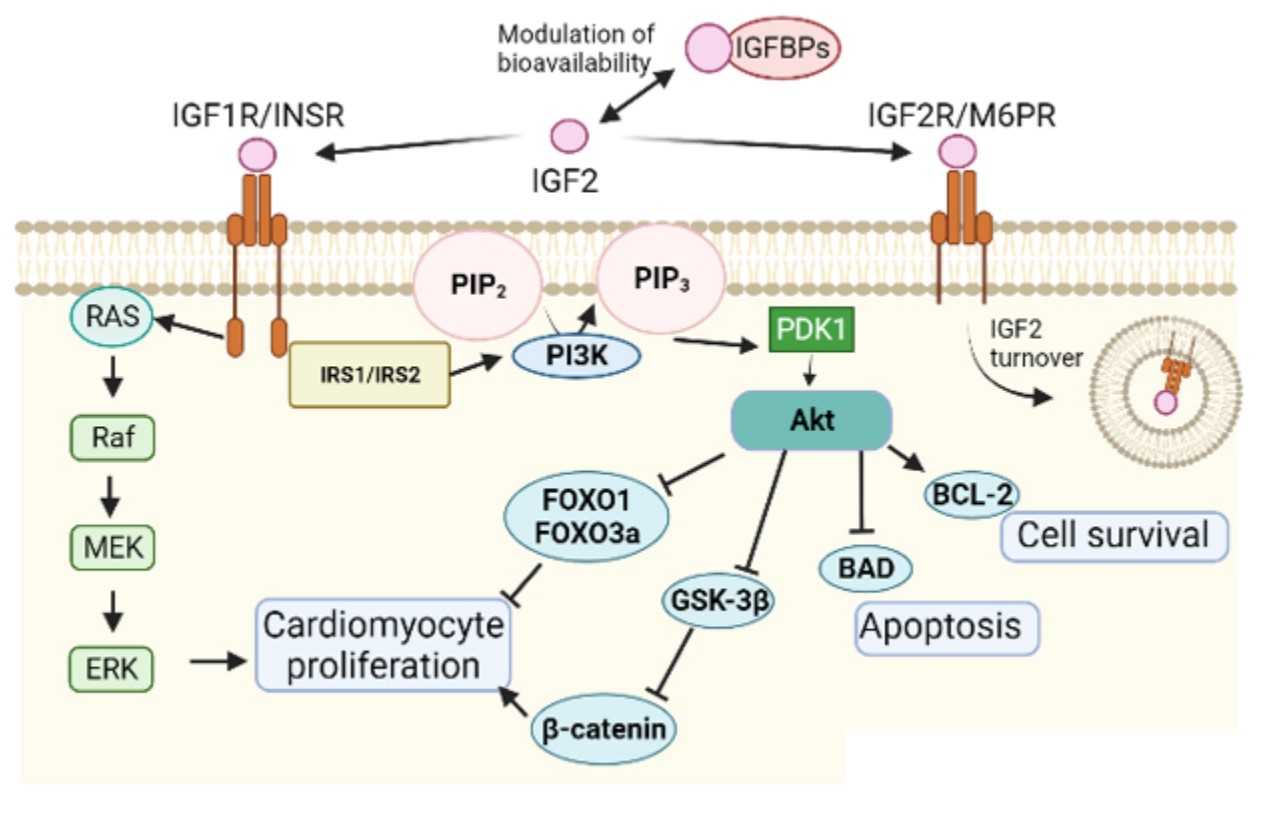
Fig1. The insulin growth factor signalling pathway in myocardial development. (Sandra Díaz Del Moral, 2021)
IGF2 Related Diseases
IGF2 has been implicated in neuroprotection and could be involved in the treatment of neurodegenerative diseases such as Parkinson's disease. IGF2 may play a role in preventing Huntington's disease by processing extracellular protein aggregates. IGF2 is known to influence cell proliferation and its dysregulation can lead to uncontrolled cell growth, potentially contributing to cancer development. IGF2 has been shown to have a treatment effect on autoimmune diseases, and its action is dose-dependent—low doses promote the formation of anti-inflammatory macrophages to alleviate disease, while high doses can worsen the condition by promoting pro-inflammatory macrophages.
Bioapplications of IGF2
IGF2's role in growth regulation has led to its consideration as a therapeutic target for growth disorders such as Silver–Russell syndrome and Beckwith–Wiedemann syndrome, which are associated with abnormalities in IGF2 gene expression. Given its involvement in cell proliferation and its dysregulation in various cancers, IGF2 is considered a potential therapeutic target for cancer treatment. It is being studied for its potential to inhibit tumor growth and metastasis.
Case Study
Case Study 1: Jihyun Jang, 2022
Establishment of the myocardial wall requires proper growth cues from nonmyocardial tissues. During heart development, the epicardium and epicardium-derived cells instruct myocardial growth by secreting essential factors including FGF (fibroblast growth factor) 9 and IGF (insulin-like growth factor) 2. However, it is poorly understood how the epicardial secreted factors are regulated, in particular by chromatin modifications for myocardial formation. The current study is to investigate whether and how HDAC (histone deacetylase) 3 in the developing epicardium regulates myocardial growth. Various cellular and mouse models in conjunction with biochemical and molecular tools were employed to study the role of HDAC3 in the developing epicardium. The results show that the supplementation of FGF9 or IGF2 can rescue the myocardial proliferation defects treated by Hdac3 KO supernatant. Overexpression of miR-322 or miR-503 repressed FGF9 and IGF2 expression, while knockdown of miR-322 or miR-503 restored FGF9 and IGF2 expression in Hdac3 KO mouse epicardial cells.
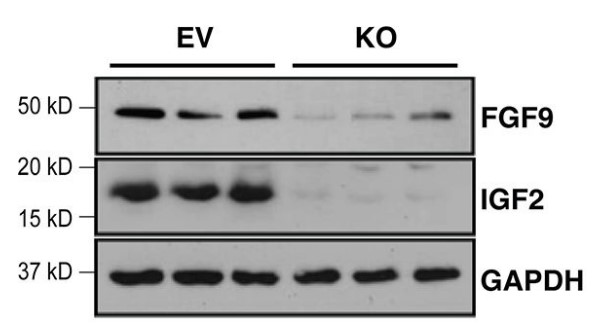
Fig1. Quantification of FGF9 and IGF2 in Hdac3 KO and EV MECs by western blot.
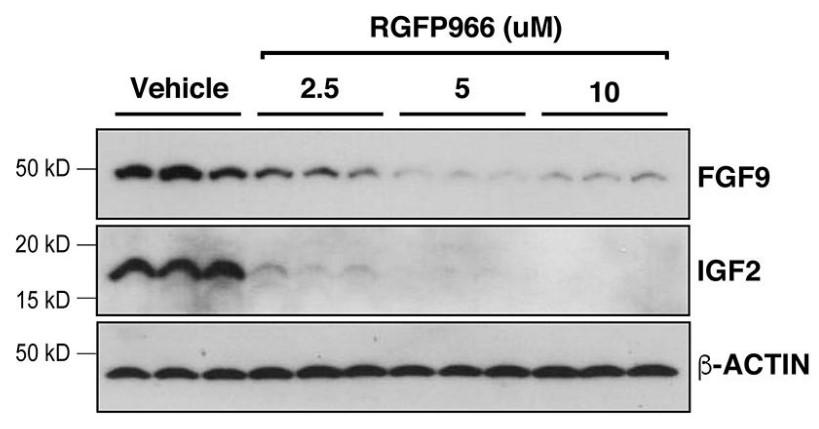
Fig2. Decease of FGF9 and IGF2 protein levels after RGFP966 treatment.
Case Study 2: Sofia S Pereira, 2019
Clinical outcomes of adrenocortical carcinomas (ACC) could be improved by using novel treatment targets based on the recent advances of tumor biology knowledge. Insulin-like growth factor 2 (IGF2) protein expression is usually 8-80 fold higher in ACC when compared to normal adrenal glands (N-AG) or adrenocortical adenomas (ACA), despite the fact that the biological features of high vs. low IGF2 expressing ACC have not yet been well characterized. This study's goal was to understand the IGF2 role in ACC biology by focusing in several cancer hallmarks, including cell proliferation, viability, invasion, and metabolism. IGF2 immunohistochemistry expression was evaluated in ACC, non-functioning adrenocortical adenoma (ACAn), and N-AG. The effects of IGF2 in cell proliferation, viability, invasion, and metabolism, as well as in MAPK/ERK and mTOR pathways activation and N-cadherin expression, were evaluated in the ACC human cell line H295R. IGF2 expression was increased in ACC compared to ACAn and N-AG. Exposure to 100 ng/mL of IGF2 increased H295R cell proliferation and viability. mTOR inhibition reverted IGF2 triggered cell proliferation and viability while MEK/MAPK/ERK inhibition only reverted IGF2 effects on cell proliferation.
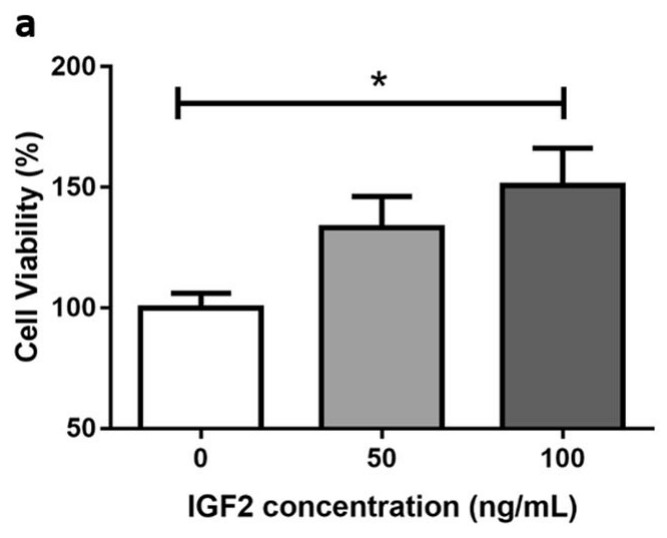
Fig3. H295R cells viability after incubation without or with IGF2.
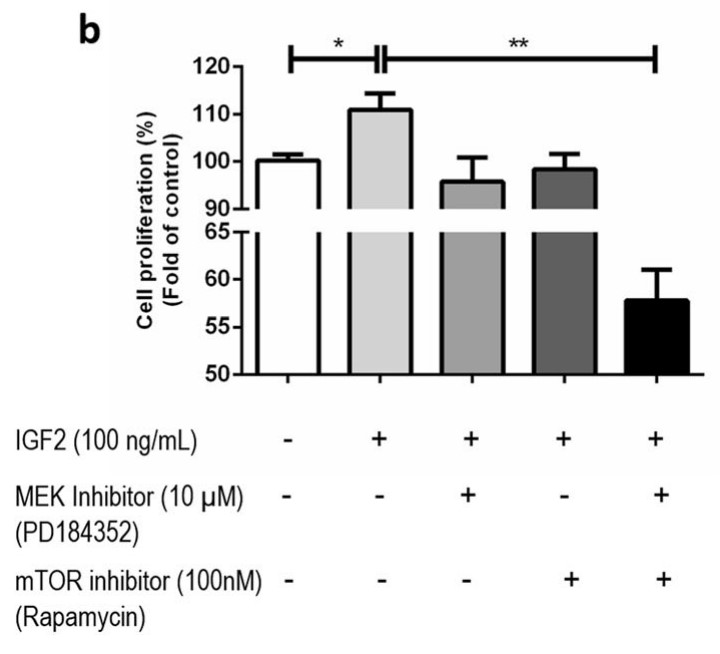
Fig4. Proliferation after treatment with IGF2 with and without the MAPK and mTOR inhibitors.
Quality Guarantee
High Purity
.jpg)
Fig1. SDS-PAGE (IGF2-620H)
.
.jpg)
Fig2. SDS-PAGE (IGF2-816H)
Involved Pathway
IGF2 involved in several pathways and played different roles in them. We selected most pathways IGF2 participated on our site, such as Proteoglycans in cancer, which may be useful for your reference. Also, other proteins which involved in the same pathway with IGF2 were listed below. Creative BioMart supplied nearly all the proteins listed, you can search them on our site.
| Pathway Name | Pathway Related Protein |
|---|---|
| Proteoglycans in cancer | HOXD10,PRKACG,WNT5B,PDPK1,PTPN11,TWIST2,TLR2,PLAU,FZD3,FZD8 |
Protein Function
IGF2 has several biochemical functions, for example, growth factor activity,hormone activity,insulin receptor binding. Some of the functions are cooperated with other proteins, some of the functions could acted by IGF2 itself. We selected most functions IGF2 had, and list some proteins which have the same functions with IGF2. You can find most of the proteins on our site.
| Function | Related Protein |
|---|---|
| insulin-like growth factor receptor binding | IGF2B,SHC1,IRS1,REN,INSR,INSL4,Ren1,INS,GNAS,SOCS2 |
| protein binding | TMEM203,KCND2,UBASH3A,SIAH1,RNF115,ADRA2A,SIX3,TRDN,SYN1,SERINC1 |
| protein serine/threonine kinase activator activity | CAB39,STRADA,LTF,CALM1,CALM2,ALS2,STK3,PARP16,MAP2K1,FAM20A |
| hormone activity | INSL4,ADIPOQ,GPHA2,PRL8A9,THPO,UCN2,PRL3B1,Gh,IGF2A,GH1 |
| insulin receptor binding | GRB10,PTPN1,INS1,SLC2A2,ENPP1,INSL3,DOK7,DOK4,PTPN11,DOK2 |
| receptor activator activity | PRKCE,PPARGC1B |
| growth factor activity | TIMP1,PDGFAB,FGF21,BMP4,MIA1,FGF18B,FBRS,FGF1B,NRG2,VEGFAB |
Interacting Protein
IGF2 has direct interactions with proteins and molecules. Those interactions were detected by several methods such as yeast two hybrid, co-IP, pull-down and so on. We selected proteins and molecules interacted with IGF2 here. Most of them are supplied by our site. Hope this information will be useful for your research of IGF2.
IGF2R;RBPMS
Resources
Gene Families
Related Services
Related Products
References
- Plymate, SR; Bhatt, RS; et al. Taxane Resistance in Prostate Cancer Mediated by AR-Independent GATA2 Regulation of IGF2. CANCER CELL 27:158-159(2015).
- Kang, Z; Yu, Y; et al. Downregulation of IGFBP2 is associated with resistance to IGF1R therapy in rhabdomyosarcoma. ONCOGENE 33:5697-5705(2014).




